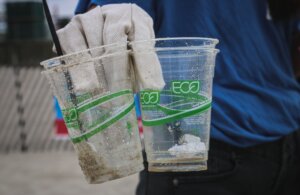Industry experts criticise companies in their attempts to peddle falsely-labelled compostable products. (Credit: monicore / Pixabay)
With compostable packaging often misleading consumers in its sustainability benefits, many industry experts have criticised companies in their attempts to peddle falsely-labelled compostable products. In his article on packaging-gateway.com Deborah Williams takes a look at the current state of the compostable packaging market, the misconceptions around it and where it could go in the next five to ten years.
Made using plant-based or fossil fuel materials, compostable packaging has the benefit that its end-of-life disposal is environmentally friendly, providing the earth with nutrients once it is fully broken down. However, regardless of its benefits, all compostable packaging is required to be tested for disintegration, biodegradation and non-toxic impact, and disposed of correctly. With such packaging also certified by independent third parties and a compostable logo added on, why is this material still continuously misunderstood?
The compostables myth
The term compostable often produces a lot of confusion. Many consumers believe that it means they can freely dispose of it in the environment, due to only knowing compost as a plant fertiliser. However this is not the case. Just like any other material, compostable packaging must be separated from other materials for processing and disposed of correctly.
In order for compostable materials to break down, it must be exposed to the correct conditions. According to waste charity WRAP, industrial composting conditions require a high temperature of 55-60°C, combined with a similar level of humidity and oxygen. This setting is considered more ideal compared to other conditions, such as in soil, marine water or surface water.
Another compostable myth is that compostable packaging and biodegradable packaging are the same, with many consumers failing to distinguish the difference between the two and often disposing of both in the same way.
“We have to constantly explain to customers the difference between compostable and biodegradable,” explains Mark Lingard, marketing manager at packaging specialist Sirane. “Education is needed and, often, packaging itself needs to be more honest to stop consumers wrongly believing they are buying green.”
Many packaging experts have called for companies to use the correct descriptions for their packaging in order to tackle the confusion surrounding the compostables and biodegradables market.
“We have to constantly explain to customers the difference between compostable and biodegradable.”
Lingard says, “Until companies stop trying to use biodegradable as a way of making something sound environmentally friendly, and effectively cheating the consumers who believe they are doing the right thing, then problems will remain. This has been heightened by the current trend in the market for what appear to be paper pouches or bags, but are lined on the inside with plastic, designed to play on the consumer’s perception.”
One way to understand the difference between the two is that the materials used for compostable packaging do not produce toxins as it decomposes. In addition to this, certified compostable packaging is guaranteed to decompose under specific conditions, whereas biodegradable packaging has no fixed timeframe to break down.
Another myth companies lead consumers to believe is that plastic is inherently bad, which Lingard points out is false. “In some cases it’s absolutely the correct material to use for packaging. The key is removing plastic where it is possible to do so – where it is used unnecessarily. If removing plastics simply creates a food waste problem, then which is the lesser of two evils? We have to be honest with consumers that not all plastics can be replaced and removed, and make sure the ones that remain are recyclable and are recycled.”
WRAP states that compostable plastics can be composted at industrial scale composting facilities or, in some cases, may be suitable for home composting. However, the charity points out that it is important that only compostable plastics are sent via these methods, as non-compostable plastics can contaminate the final compost produced.
Read more...










